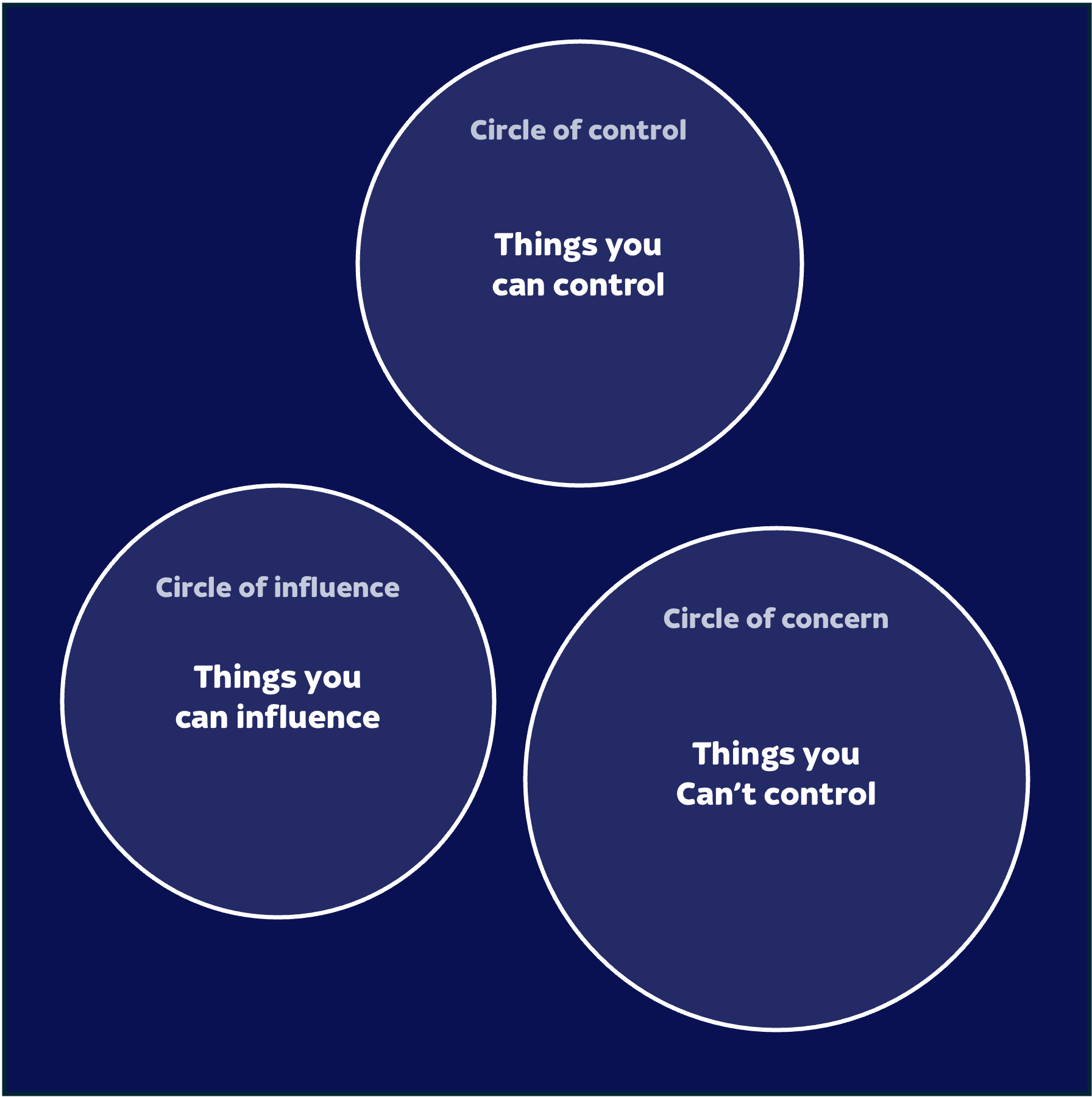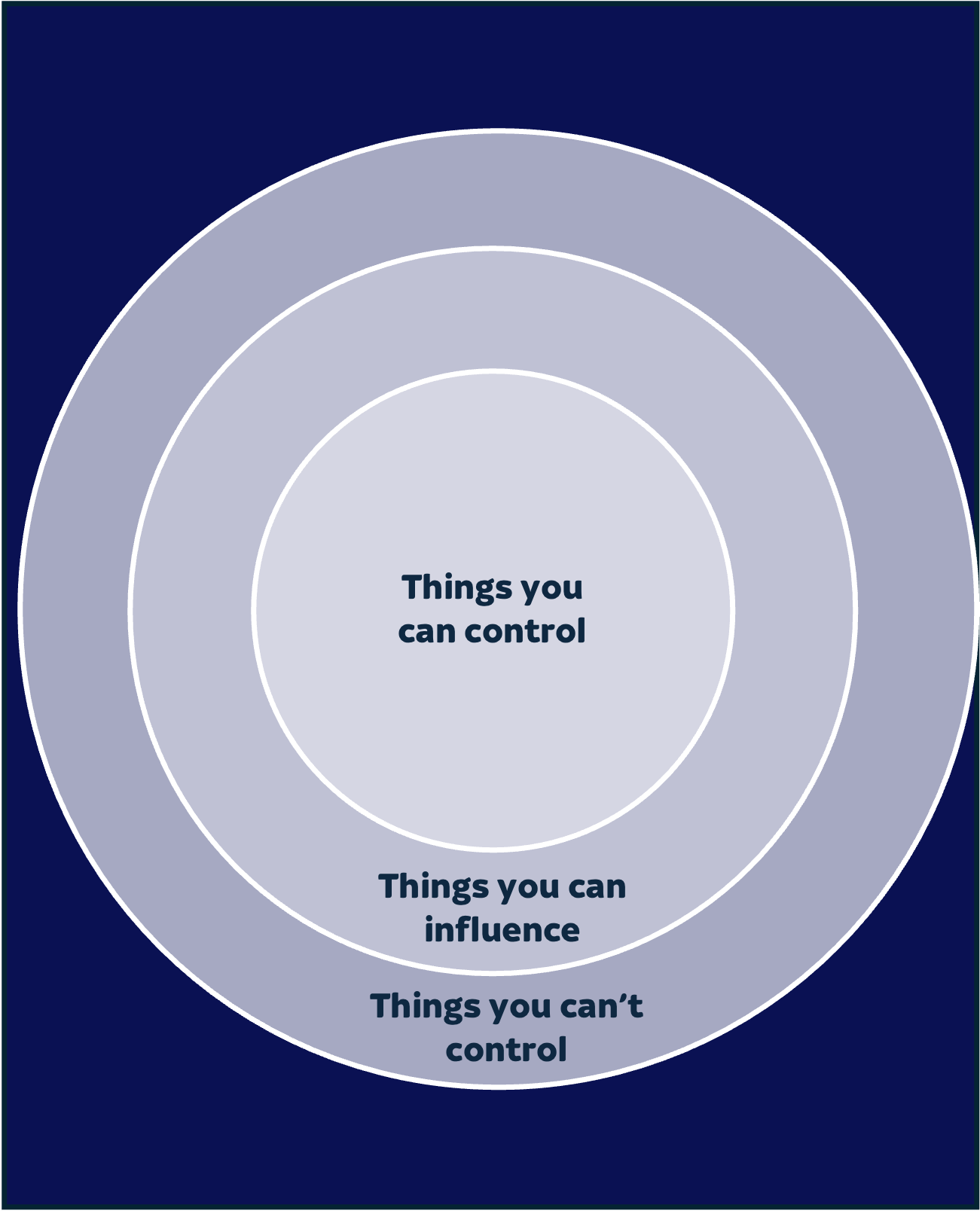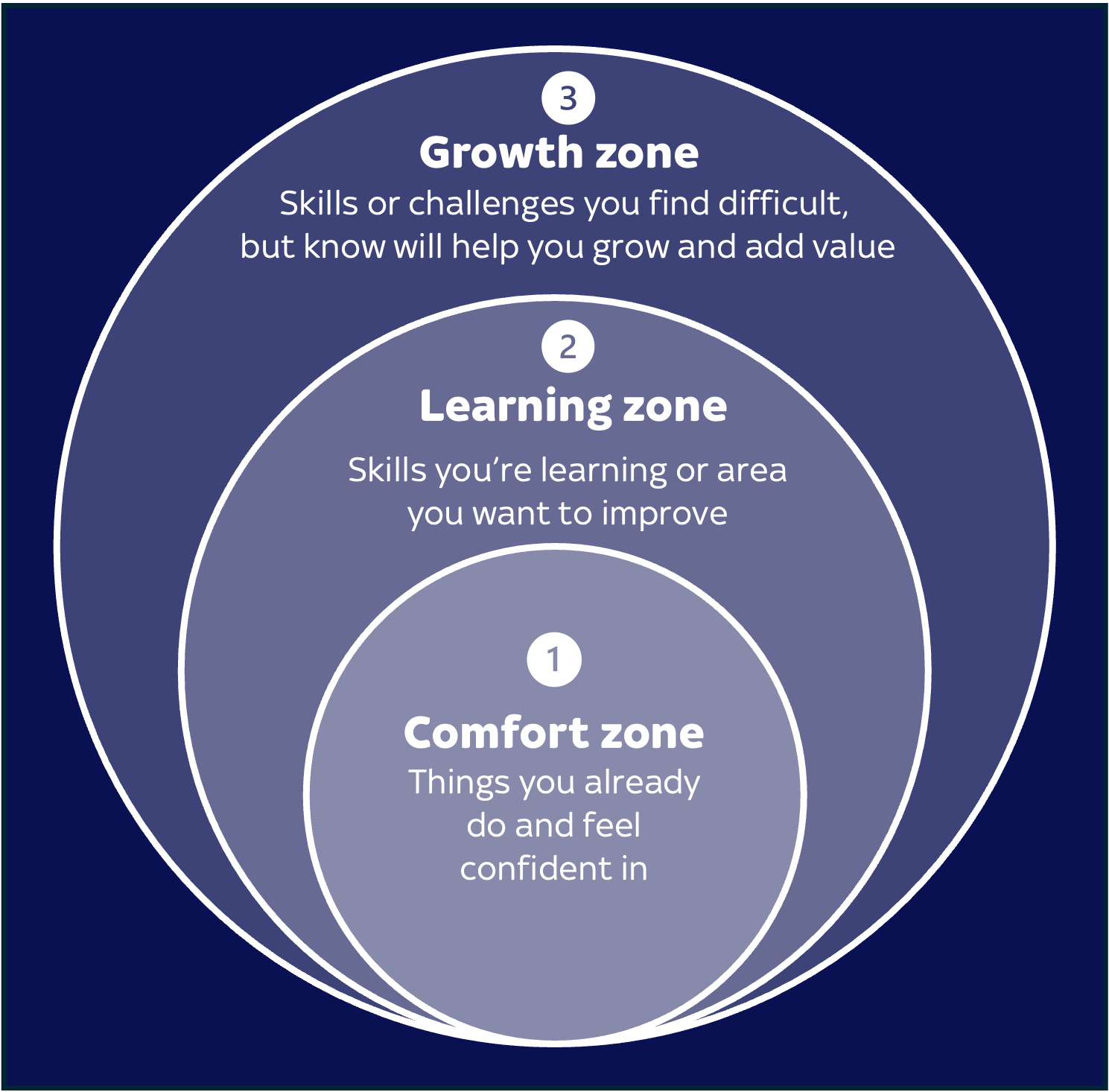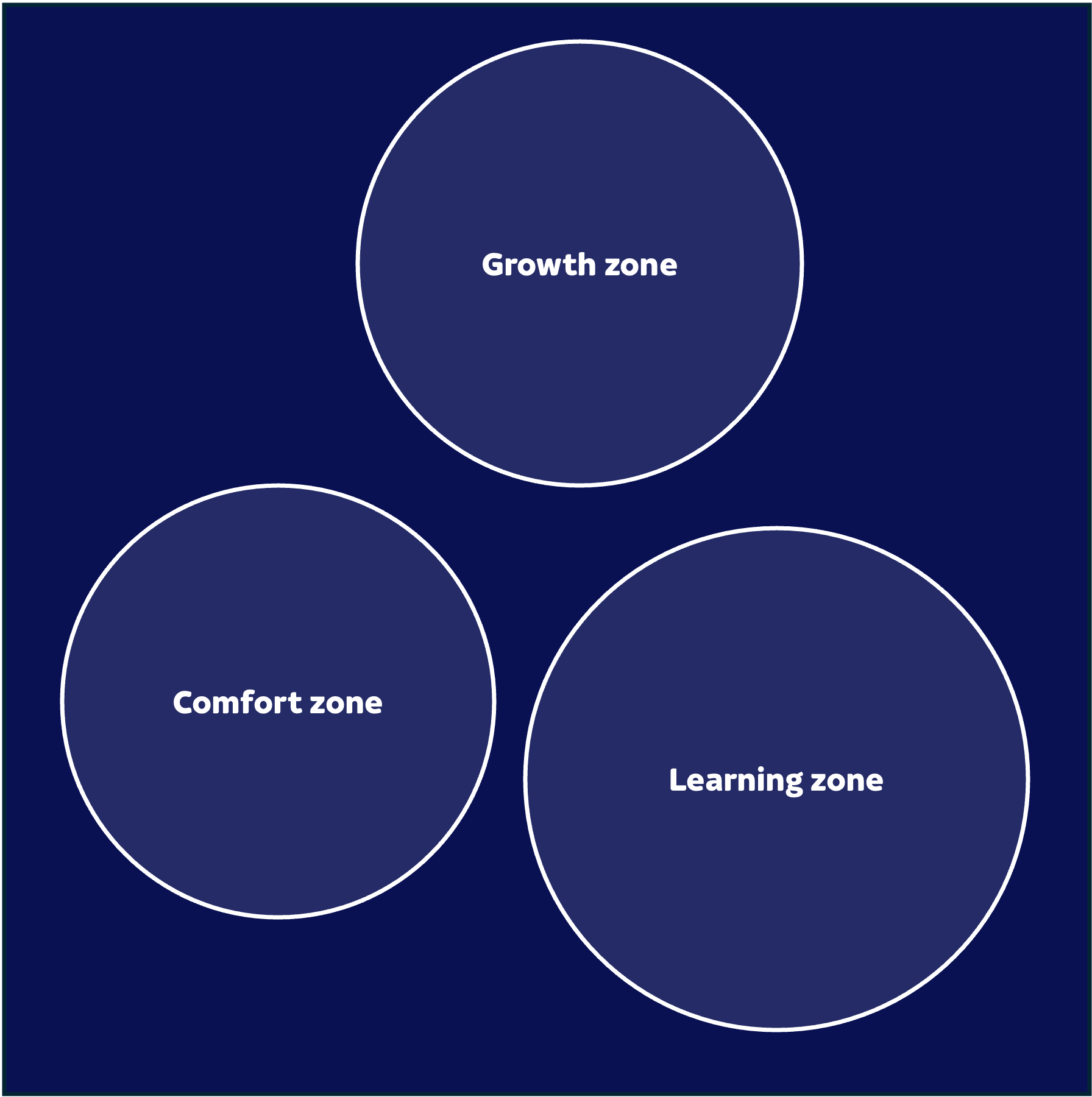






Activity one
Let’s take a moment to pause and reflect. Recent learning or changes in your role can offer valuable insight into where you’re thriving and where you might need support.
Take a few minutes to note down:
What areas do you feel confident in?
Where do you want to build more experience?
What areas you need help or support with?
Activity one
Now that you’ve had time to reflect individually, let’s open it up for discussion.
What themes or challenges came up in your reflections?
What are two practical ways we can support each other in building confidence and capability?
Activity two
Embedding learning takes more than just knowing, it requires reflection, action, and ongoing support
Everyone's journey is different. We all have unique strengths and development needs
Small, consistent actions build lasting confidence and capability
Peer support is powerful. We grow faster when we grow together
Activity two
What's one small action you can take from today’s session?
What have you learned that you could apply in your role this week?
What support do you need to make that happen?
How can you support someone else in the team with their development?
Head back to the home page and choose your next topic from the menu.
Remember, you're aiming to complete two topics of your choice during this session.


Activity one
Activity one
Having a can-do attitude helps build resilience and grow your confidence over time. It's about how we respond to setbacks, challenges, and change — and believing in our ability to learn and adapt.
A can-do mindset sounds like:
“Setbacks are part of my journey.”
“Challenges are temporary.”
“With effort, change is always possible.”
Reflect on these phrases and consider how adopting this mindset can support your personal development and day-to-day work.
Activity two
A can-do attitude is all about approaching challenges with positivity and a belief that, with effort, you can develop and improve.
The opposite is a can't do attitude — where someone doubts their ability to change, avoids challenges, and focuses on what they think they can't do. Over time, this mindset can lead to negative thinking and hold back personal development.
Shifting from “I can’t do” to “I'll give it a go” can make a big difference. Let's explore how that mindset can shape our confidence and development.
Activity two
The great news? We can shift our mindset just by looking at things a little differently.
Learning new things can be tough, but by changing how we talk to ourselves, we build confidence and resilience.
Let’s give it a go...
Activity two
Take a look at these common “can’t-do” thoughts.How can you turn them into “can-do” thoughts?
Activity one
We all have areas we want to improve in.
What matters is how we frame them.
Step one:
Write down something you feel you’re not good at.
Now add the word “yet” at the end of it
Example: “I can’t handle difficult calls… yet.”
Step two:
Now reframe it into a positive, can-do mindset.
Example: “I’m learning how to handle difficult calls, and I’ll get better with practice.”
Activity two
A can-do mindset means believing we can grow through effort, learning, and persistence
Challenges and mistakes aren’t failures — they’re valuable opportunities to learn and improve
The words we use matter. Simply adding “yet” can shift a fixed mindset into a development mindset
Changing how we think and talk to ourselves helps us stay positive, build resilience, and boost motivation
We can make a big difference by supporting each other — encouragement, sharing tips, and recognising progress all help build a stronger team
Activity two
What's one small action you can take from today’s session?
What have you learned that you could apply in your role this week?
What support do you need to make that happen?
How can you support someone else in the team with their development?
Head back to the home page and choose your next topic from the menu.
Remember, you're aiming to complete two topics of your choice during this session.


Activity two
Change, especially big change, can stir up all kinds of emotions: uncertainty, frustration, even excitement. These feelings are completely normal.
But while we can't always control what's happening around us, we can control how we respond.
That's where the circles of control, influence, and concern come in. This model helps us shift our focus to what we can control or influence and let go of what we can’t — so we can stay proactive, resilient, and positive in times of change.
Activity two

Draw three circles and label them:
Circle of control
Circle of influence
Circle of concern
List any current worries, challenges, or changes you’re experiencing.
Place each one into the circle you think fits best.
Everyone’s circles will look different — and that's OK. There are no right or wrong answers. This is about helping you gain perspective and focus your energy where it can make a real difference.
Activity two

What’s one change or challenge you’ve focused on lately?
What’s in your circle of control? Why is it important to focus here?
What’s in your circle of influence? How can focusing here help you support others?
What’s in your circle of concern? Is there anything here you could move into your circle of influence with action or support?
What’s one action or mindset shift you’re taking away from this activity?
Activity two
Categorising your concerns helps you focus on where you can make a real difference
Spending more time in your circle of control reduces the feeling of being overwhelmed and builds confidence
Prioritising what you can influence, while practicing acceptance for what you can’t, helps manage stress and build resilience
Change can be tough — but we’re not powerless
When we focus on what we can control, we reclaim energy, take positive action, and support each other through uncertainty
Activity two
What's one small action you can take from today’s session?
What have you learned that you could apply in your role this week?
What support do you need to make that happen?
How can you support someone else in the team with their development?
Head back to the home page and choose your next topic from the menu.
Remember, you're aiming to complete two topics of your choice during this session.


Activity one
Change can stir up all kinds of feelings, from frustration and resistance to curiosity and growth. In this section, we’ll pause and take a moment to reflect on how our mindset influences how we experience change. By identifying the challenges and spotting the opportunities, we can begin to shift our thinking and find new ways to support ourselves — and each other.
Activity two
Think about a change you’re currently experiencing at work. Take a few moments to reflect and answer as many of the following prompts as you can:
This change is frustrating because…
One opportunity this change brings is…
I can support others by…
One thing I’ve learned about myself during this change is…
One thing I can do differently going forward is…
Activity two
What mindset shifts have you noticed in yourself or others during times of change?
How can we support each other in staying open, adaptable, and positive?
What’s one insight or takeaway from this activity that you’ll carry forward?
Activity two
Change can be uncomfortable, but it also creates space for development
Our mindset shapes how we experience and respond to change
Sharing our experiences helps normalise the journey and builds team resilience
Staying open and adaptable helps us find opportunities — even in uncertainty
Supporting each other through change makes a real difference
Activity two
What's one small action you can take from today’s session?
What have you learned that you could apply in your role this week?
What support do you need to make that happen?
How can you support someone else in the team with their development?
Head back to the home page and choose your next topic from the menu.
Remember, you're aiming to complete two topics of your choice during this session.


Activity two
Growth isn’t just about promotions — it’s also about building skills, solving problems, and growing in confidence in your current role.
In this session, we’ll explore the Zones of growth model to reflect on where we are now, what we want to develop, and which challenges will help us move forward.
Activity two
The Zones of growth is a simple but powerful tool to help you reflect on where you are now, and where you want to go next. It breaks down your experiences into three key areas:

Comfort zone: This is where you feel safe and confident. It includes tasks and skills you’ve already mastered. While it’s a great space to recharge and reset, staying here too long can lead to stagnation
Learning zone: This is where growth begins. It’s where you take on new challenges, learn new skills, and stretch your abilities. It may feel uncomfortable at times, but it’s essential for development
Growth zone: This is the outer edge of your potential. It’s where the big, bold goals live — the challenges that might feel daunting but lead to real, rewarding progress
Activity two
Let’s take a moment to reflect using the Zones of growth tool. This exercise will help you identify your current strengths, areas you’re developing, and those big challenges that push you to grow.

Draw three circles on a page and label them:
Comfort zone
Learning zone
Growth zone
In each zone, add the following:
Comfort zone: List the tasks and skills you’re confident in. These are the things you’ve mastered and can do with ease
Learning zone: Add anything you’re currently learning or want to improve. These may feel a little challenging but are within reach
Growth zone: Think big. What skills or challenges do you find difficult but valuable? These might feel uncomfortable now but offer real potential for growth
Activity two
Let’s reflect on what we’ve mapped out and explore it as a team.

Comfort zone
What tasks or skills come naturally to you?
What are you confident doing day to day?
Learning zone
What are you currently learning or working on improving?
Is there something new you’ve recently started to develop?
Growth zone
What challenges or skills push you out of your comfort zone, but are worth it? What do you find difficult but rewarding?
Has anyone stepped out of their comfort zone recently and seen a great result? What helped you succeed
What can we do as a team to support each others growth? Any ideas or suggestions?
Activity two
Growth isn’t just about promotions—it’s about getting better at what you do every day.
Your comfort zone feels safe, but real progress happens when you step into the learning zone and stretch into the growth zone
Being in the learning or growth zone may feel uncomfortable — and that’s OK. It’s a sign you’re developing
Everyone’s zones look different, and that’s what makes diverse teams stronger
Supporting each other through challenge and change builds collective confidence and resilience
Activity two
What's one small action you can take from today’s session?
What have you learned that you could apply in your role this week?
What support do you need to make that happen?
How can you support someone else in the team with their development?
Head back to the home page and choose your next topic from the menu.
Remember, you're aiming to complete two topics of your choice during this session.


Activity one
In a previous timetolearn session, we explored the Eight skills to build resilience. Now it’s time to reflect: what’s worked well, what’s been challenging, and how can we keep building strength — both individually and as a team?
Activity one
Let’s take a moment to reflect:
What were your action points from your Eight skills to build resilience timetolearn session?
What have you done since then to develop your resilience skills?
What challenges have you faced, and how have you used your resilience skills to navigate them?
On a scale of 1 to 5 (1 = not very resilient, 5 = very resilient):
Where would you rate yourself now?
How does this compare to your last rating?
What’s changed? What’s helped you improve — and what’s still a challenge?
What resilience skills do you see as strengths, and how have you used them to support your team?
Activity two
Let's refresh our understanding of the key skills and reflect on which ones you've used and which ones you'd like to develop further:
Think positively: Focus on what’s going well and reframe challenges with a constructive outlook
Manage your emotions: Recognise and regulate emotional responses to stay calm and focused under pressure
Focus on what you can control: Direct your energy toward the actions and decisions within your influence
View challenges as opportunities: See setbacks as chances to learn, develop, and build strength
Be adaptable: Stay flexible and open to change, adjusting your approach when needed
Develop creative solutions: Use problem-solving and innovation to overcome obstacles
Learn from adverse situations: Reflect on difficult experiences to gain insight and build resilience for the future
Create strong relationships: Build supportive connections that help you navigate challenges and stay grounded
What resilience skills have you used recently?
Which skills would you like to strengthen moving forward?
Activity two
Resilience is a skill we can build and strengthen over time — through practice, reflection, and support
Reflecting on our progress helps us stay grounded, focused, and aware of how far we’ve come.
Sharing experiences and strategies creates stronger team connections and mutual support
The Eight skills to build resilience are practical tools we can use every day to navigate pressure and change
Change is challenging, but by focusing on what we can control and leaning on each other, we can adapt, grow, and thrive together
Keep the conversation going: resilience is a journey, not a destination
Activity two
What's one small action you can take from today’s session?
What have you learned that you could apply in your role this week?
What support do you need to make that happen?
How can you support someone else in the team with their development?
Head back to the home page and choose your next topic from the menu.
Remember, you're aiming to complete two topics of your choice during this session.

